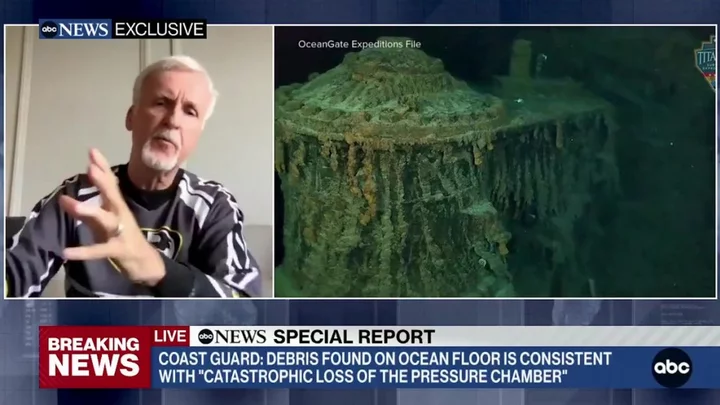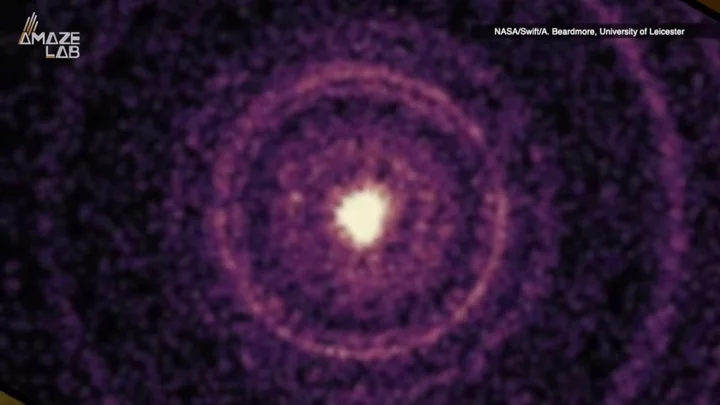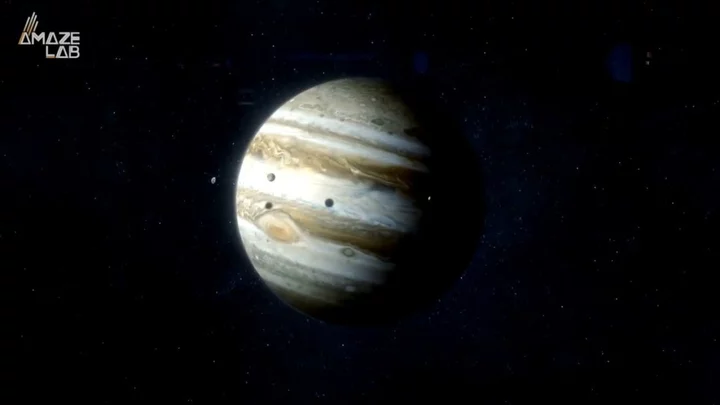
IonQ Signs Agreement With South Korea’s Ministry of Science and ICT to Cultivate Regional Quantum Computing Ecosystem
COLLEGE PARK, Md. & SEOUL, South Korea--(BUSINESS WIRE)--Jun 29, 2023--
2023-06-30 04:22

indie Semiconductor Launches Unparalleled Automotive Wireless Charging Solution
ALISO VIEJO, Calif.--(BUSINESS WIRE)--Jun 29, 2023--
2023-06-30 04:20

Tech group sues Arkansas over law requiring parental OK for minors creating social media accounts
A tech industry trade group is suing Arkansas over its law requiring parental permission for minors to create new social media accounts
2023-06-30 04:15

SME, Stratasys Announce Winners of 2023 SkillsUSA Additive Manufacturing Competition
SOUTHFIELD, Mich.--(BUSINESS WIRE)--Jun 29, 2023--
2023-06-30 04:15

Why didn't the Titanic implode when it sank?
After it was discovered that the OceanGate submersible imploded during its expedition to the Titanic, some have wondered why the Titanic did not reach the same fate when it sank. Last Thursday (June 22), the U.S. Coast Guard had announced that the OceanGate submersible which contained five people, had suffered a "catastrophic implosion" that killed all onboard. Sign up to our free Indy100 weekly newsletter Since learning about the news, some have asked why the sub imploded but the Titanic didn't as it sank. One user took to Twitter to ask the question that was on many minds: Many quickly replied to help explain why the Titanic didn't implode, the answer being that because the Titanic wasn't pressurised, the lack of pressure differential means that the sinking would not result in an implosion. Writing for Northeastern Global News, Arun Bansil, professor of physics, explained that "when a submersible is deep in the ocean it experiences the force on its surface due to water pressure. When this force becomes large than the hull can withstand, the vessel implodes violently." Many also took the opportunity to inform that some parts of the Titanic actually did implode. The stern (the rear) of the ship imploded roughly 60 metres (200 feet) below the surface of the water. Lots of air was trapped in the back of the ship, so when the external pressure got high enough, it imploded. Whereas the air had been released from the front of the ship, which caused the pressure to be equal on the outside and inside, therefore no implosion occurred. As one user explained: Have your say in our news democracy. Click the upvote icon at the top of the page to help raise this article through the indy100 rankings.
2023-06-30 03:16

Microsoft makes final case for Activision Blizzard deal as federal judge decides whether to block it
The fate of what could be the priciest merger in tech industry history will soon be in the hands of a federal judge who must decide whether to stop Microsoft from closing its deal to buy video game company Activision Blizzard
2023-06-30 02:19

BlizzCon® Returns to Anaheim November 3-4, 2023: Tickets On Sale July 8
IRVINE, Calif.--(BUSINESS WIRE)--Jun 29, 2023--
2023-06-30 01:28

US lawmaker urges labelling, restrictions on AI content
WASHINGTON U.S. Senator Michael Bennet, a Democrat who is active in artificial-intelligence issues, wrote to leading tech firms
2023-06-30 00:48

Smartsheet Recognized as a 2023 Gartner® Peer Insights™ Customers’ Choice for Collaborative Work Management
BELLEVUE, Wash.--(BUSINESS WIRE)--Jun 29, 2023--
2023-06-30 00:25

PowerFlex Enables Large-Scale Fleet Electrification with Intelligent EV Charging Management Software, PowerFlex X
SAN DIEGO--(BUSINESS WIRE)--Jun 29, 2023--
2023-06-30 00:17

Snapchat+ gains 4 million paying subscribers in its first year
Snap said Thursday that it has garnered more than 4 million paying customers for its subscription service Snapchat+.
2023-06-29 23:59

Scientists just detected a ‘cosmic bass note’ in the depths of space
A low intergalactic grumbling is emanating from deep space, according to scientists. And no, it’s not the start of the end times. Astronomers say they detected the first-of-their-kind low frequency ripples, described as a “cosmic bass note” of gravitational waves, which is thought to be caused by supermassive black holes merging across the universe. The discovery could unveil new secrets about how the monster black holes, which lie at the centre of galaxies, work. The objects are millions – possibly billions – the times the mass of the sun, but little is known about them because no light can escape. Sign up to our free Indy100 weekly newsletter “This is huge news,” said Dr Stephen Taylor, chair of the North American Nanohertz Observatory for Gravitational Waves (Nanograv) consortium, which led the team which made the discovery, and an astrophysicist at Nashville’s Vanderbilt University. Dr Michael Keith, of Jodrell Bank Centre for Astrophysics and a member of the team which helped find the signal, added: “The results presented today mark the beginning of a new journey into the universe to unveil some of its unsolved mysteries. “We are incredibly excited that after decades of work by hundreds of astronomers and physicists around the world, we are finally seeing the signature of gravitational waves from the distant universe.” Before the discovery, scientists have only captured short “chirps” of gravitational waves which are linked to the massive objects merging. But the “bass note” comes after they tuned into a deeper range of frequencies. It is thought to be caused by a single complete gravitational wave travelling at the speed of light. Astronomers think it is produced by the entire population of supermassive black hole binaries from over roughly the last 8bn years of the universe. “We think each pair contributes a little wave, which is added to a little wave of another, and all together that is what we may see right now – a sort of murmur of the entire population,” said Prof Alberto Vecchio of the University of Birmingham and a member of the European Pulsar Timing Array. Prof Andrew Pontzen, a cosmologist at University College London, added: “It’s not often that we get a glimpse of the universe through a totally new lens, but after 15 years of patient work, Nanograv seems to be providing just that. It’s tremendously exciting to see initial evidence for these waves, which will eventually teach us an enormous amount about supermassive black holes, hundreds of millions of times the mass of the sun.” The findings were published on 29 June by Astrophysical Journal Letters. Have your say in our news democracy. Click the upvote icon at the top of the page to help raise this article through the indy100 rankings.
2023-06-29 23:54
You Might Like...

Move over Wordle, the New York Times might have found its next hit game

Meta's new AI dating coach doesn't want to chat about sex

Microsoft to pay $20 million to settle charges it collected children's information

Scientists make 'shocking' discovery on Saturn's moon that could reveal signs of life

Google and Meta withdraw from upcoming Web Summit

See Apple's pivotal product announcements through history

EU official visits Twitter headquarters to 'stress test' its ability to handle content moderation

Outdid Raises $2.5 Million to Provide Identity Verification in a Private and Trustless Manner
